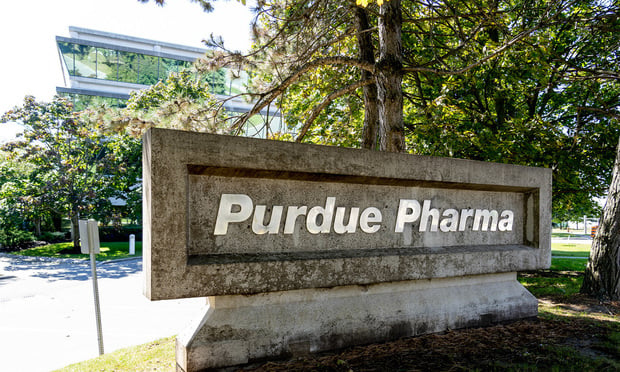Features

Contours of Bribery Analyzed By Second Circuit In Bank Corruption Case
This article analyzes the Second Circuit's decision, which rejected the defense's arguments for narrowing the definition of "corruptly" and a "thing of value" in the context of Section 215(a)(2).
Features

Can Anti-SLAPP Motion Denials Be Immediately Appealed?
In a move of keen interest to the entertainment industry, the full U.S. Court of Appeals for the Ninth Circuit has agreed to review whether a judge's denial of a motion to strike a California Strategic Lawsuits Against Public Participation suit can be immediately appealed by the defendant who claims the case was brought solely to chill its speech.
Features

DE Bankruptcy Court Decision Provides Reminder of Potential Consequences of Violating the Automatic Stay
An opinion from the U.S. Bankruptcy Court for the District of Delaware provides a reminder of the potentially severe punishment that a party can suffer as a result of its violation of the automatic stay of Section 362 of the Bankruptcy Code, even if the debtor does not suffer any actual damages as a result of the violation.
Features

White Box vs. Black Box Compensation Systems
Having a compensation system that clearly outlines partner expectations, provides the partners with the ability to validate the results by communicating the results back to them does more to build collegiality than an opaque system that, by its design, promotes distrust and ill will among partners.
Features

Navigating Legal Real Estate Issues in the Cannabis Industry
This article explores just a few of the major legal opportunities and pitfalls associated with real estate in the cannabis industry, shedding light on some of the potential complexities and issues that businesses and investors may face.
Features

The Case for Partnering with a Financial Advisor
Unless you carry the correct licenses, it makes sense to develop a relationship with several financial advisors and refer business from time to time.
Features

Could Mass Tort Bankruptcies Fall Apart in 2024?
Mass tort bankruptcies took some big hits in 2023, with two of them dismissed outright, and two more potentially hanging in the balance.
Features

SEC Revises Beneficial Ownership Reporting Rules
This article identifies certain information asymmetries in the SEC's beneficial ownership reporting rules, discusses the extent to which those information asymmetries are addressed (or not) under the SEC's recent rule amendments, and considers whether additional rule amendments or SEC guidance continue to be necessary.
Features

All the News That's Fit to Pinch: NYT v. OpenAI Could Be Most Troublesome of AI Copyright Cases
The emerging cases by authors and copyright owners challenging various generative AI programs for using copyrighted materials are certain to create new troubles for the courts being asked to apply the fair use doctrine to this important new technology.
Features

Interest Rates Are 2024's Biggest Unknown
The Federal Reserve stands at a pivotal juncture as it deliberates on its interest rate policy for 2024. In the wake of tumultuous economic shifts brought about by the pandemic, the Fed faces the delicate task of balancing robust economic recovery against inflationary pressures that appear to be subsiding.
Need Help?
- Prefer an IP authenticated environment? Request a transition or call 800-756-8993.
- Need other assistance? email Customer Service or call 1-877-256-2472.
MOST POPULAR STORIES
- The 'Sophisticated Insured' DefenseA majority of courts consider the <i>contra proferentem</i> doctrine to be a pillar of insurance law. The doctrine requires ambiguous terms in an insurance policy to be construed against the insurer and in favor of coverage for the insured. A prominent rationale behind the doctrine is that insurance policies are usually standard-form contracts drafted entirely by insurers.Read More ›
- A Lawyer's System for Active ReadingActive reading comprises many daily tasks lawyers engage in, including highlighting, annotating, note taking, comparing and searching texts. It demands more than flipping or turning pages.Read More ›
- The Brave New World of Cybersecurity Due Diligence in Mergers and Acquisitions: Pitfalls and OpportunitiesLike poorly-behaved school children, new technologies and intellectual property (IP) are increasingly disrupting the M&A establishment. Cybersecurity has become the latest disruptive newcomer to the M&A party.Read More ›
- Abandoned and Unused Cables: A Hidden Liability Under the 2002 National Electric CodeIn an effort to minimize the release of toxic gasses from cables in the event of fire, the 2002 version of the National Electric Code ("NEC"), promulgated by the National Fire Protection Association, sets forth new guidelines requiring that abandoned cables must be removed from buildings unless they are located in metal raceways or tagged "For Future Use." While the NEC is not, in itself, binding law, most jurisdictions in the United States adopt the NEC by reference in their state or local building and fire codes. Thus, noncompliance with the recent NEC guidelines will likely mean that a building is in violation of a building or fire code. If so, the building owner may also be in breach of agreements with tenants and lenders and may be jeopardizing its fire insurance coverage. Even in jurisdictions where the 2002 NEC has not been adopted, it may be argued that the guidelines represent the standard of reasonable care and could result in tort liability for the landlord if toxic gasses from abandoned cables are emitted in a fire. With these potential liabilities in mind, this article discusses: 1) how to address the abandoned wires and cables currently located within the risers, ceilings and other areas of properties, and 2) additional considerations in the placement and removal of telecommunications cables going forward.Read More ›
- Guidance on Distributions As 'Disbursements' and U.S. Trustee FeesIn a recent case from the Bankruptcy Court for the District of Delaware, In re Paragon Offshore PLC, the bankruptcy court provided guidance on whether a post-plan effective date litigation trust's distributions constituted disbursements subject to the U.S. Trustee fee "tax."Read More ›
